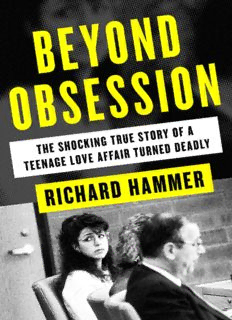
Beyond Obsession: The Shocking True Story of a Teenage Love Affair Turned Deadly PDF
Preview Beyond Obsession: The Shocking True Story of a Teenage Love Affair Turned Deadly
Beyond Obsession Richard Hammer Why, what could she have done, being what she is? Was there another Troy for her to burn? —W. B. YEATS “No Second Troy” My only love sprung from my only hate! Too early seen unknown, and known too late! —WILLIAM SHAKESPEARE Romeo and Juliet Author’s Note This is a work of nonfiction. The reader will find in it events that defy logic, actions that would not be credible in fiction, people whose motives seem often irrational and not easily explained, sometimes beyond simple explanation or even any explanation at all. But life does not follow formulas, and neither people nor events behave as we would wish them to or as we believe and expect they should. Yet this story is a true one, the events did happen and these people are real. The story is a mystery, its solution still debated. There are a number of events about which the major participants told conflicting versions, sometimes vastly and critically different. In most instances I have presented both versions, to give the reader the opportunity to make up his or her own mind on which seems most reasonable, on which seems most clearly to arise from what went before and from the personalities of the antagonists. I have, though, tried to set down guideposts, which the reader should take merely as my view. If there are solutions to the unanswered questions that hover over the outcome, they lie in the story itself and how the reader interprets it. As will become clear, different people have read the evidence in different ways. Some mention must be made about the section dealing with the trials of Dennis Coleman and especially of Karin Aparo. A trial, contrary to television and fictional presentation, is a study in tedium. It is long stretches of legal argument and repetitious and befuddling questions and responses, broken now and then, but not often, by an illuminating colloquy. There are few surprises, for any good lawyer should know the answer to a question before he or she asks it, and there are almost never one of those dramatic climaxes so dear to fiction. These trials were different only to the extent that witnesses gave widely conflicting testimony. In setting down what seemed to me the high points and critical moments in direct examination and cross-examination in these trials, I have tried to edit out
Description: